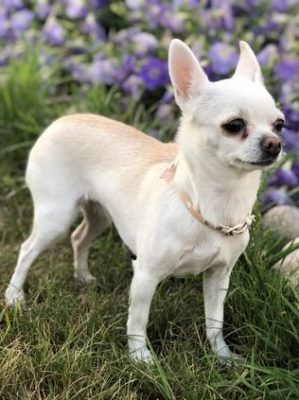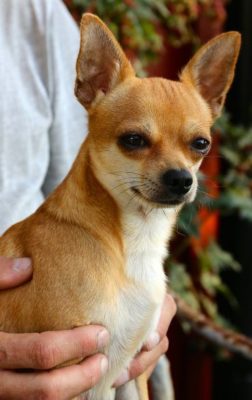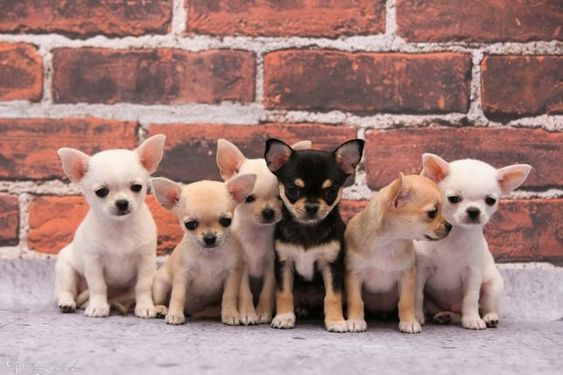Chihuahua
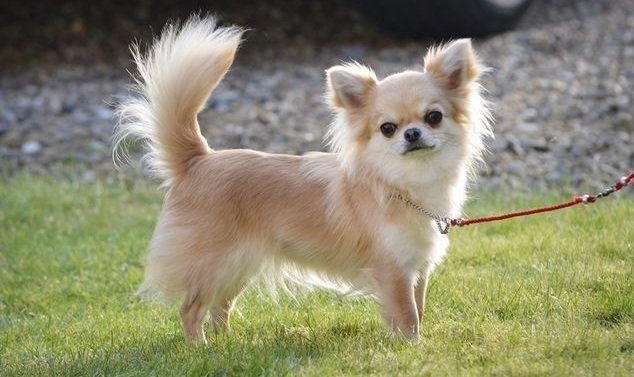
Despite its small size, the Chihuahua is hard to miss. They are active, inquisitive, and attached to their owner. Bad tolerate loneliness. On long trips, it is better to take pets with you. Moreover, their small size allows them to do so. The naked eye can notice their devoted love for their families, but Chihuahuas find it difficult to contact strangers. When the owner gives a lot of time to another person, the animals become jealous.
Table of Contents
Breed Information
| Another Name | Chihuahueño |
| Origin | Mexico |
| Height | 15-23 cm |
| Weight | 0.5-3 kg |
| Fur | Long, short |
| Color | Black, white, brown, and others |
| Lifespan | 11-16 years |
| FCI Classification | Companion and Toy Dogs |
| Group | Small breed of decorative dogs, dogs for apartments |
| Price | From $500 to $8000 |
Breed Photos
Origin History
The name of the breed comes from the state of Chihuahua, Mexico, where the dogs originated. The Tecchis are considered to be distant relatives. The Toltec Indians bred the small mute animals in the ninth century. They were raised as food for the natives and occasionally sacrificed to sacred deities. Almost all of the Teche was exterminated by the Spaniards. For a century, they were never heard of. Only in the middle of the XIX century did the Mexicans offer American tourists an unusual product – tiny pocket dogs. These exclusive animals were named after the state in which they were sold. Later all representatives were renamed after the state of Chihuahua. The other theory of the origin of the breed says that they appeared due to the Chinese hairless dog and local representative’s crossing. In the blood of modern Chihuahuas are found genes of spitzers, Toy Terriers, papillon dogs, and pinchers.
The name of these tiny babies made it into the American breeding book in 1904. And three years later, they found a place with British breeders. In 1923 short-haired representatives of the breed were officially recognized. The long-haired Chihuahuas were included in the FCI standard only in 1954.
Interestingly, in the USSR, the first specimens settled in the house of the figure Nikita Khrushchev. Puppies named Mishter and Mushinka were a gift to the secretary-general from Cuban commander Fidel Castro. Mushinka even managed to build a movie career. And Mishter became the ancestor of the Chihuahua in the Soviet Union.
Appearance
The Chihuahua is the smallest dog in the world. The shape of the skull resembles an apple. The muzzle is short, wide, and pointed closer to the nose. The neck is medium-sized and curves slightly upward. The standard dentition is 4 canines, 10 molars, 12 incisors, and 16 premolars. The nose is of short length and is turned upwards. The lobe is allowed to be either colored or black. The large eyes are dark. But the presence of a lighter shade is also not an indication for disqualification. The ears are erect and wide.
The physique has a short back and a strong loin. The front legs are long and straight. The hind legs are muscular and well developed. The paws are small with spread toes. The tail is set high. The coat is allowed to be long or short. Long-haired has a soft, slightly wavy coat. Short-haired have a smooth coat. All colors are allowed, except marbled. Not officially recognized:
- aggressive disorder;
- alopecia;
- absence of a tail;
- small cropped ears;
- long and fluttering pinnacles of hair;
- “deer” silhouette;
- underweight and overweight.
Character
Despite its small size, the Chihuahua is hard to miss. They are active, inquisitive, and attached to their owner. Bad tolerate loneliness. On long trips, it is better to take pets with you. Moreover, their small size allows them to do so. The naked eye can notice their devoted love for their families, but Chihuahuas find it difficult to contact strangers. When the owner gives a lot of time to another person, the animals become jealous. Dogs are not endowed with shyness and indecisiveness. Their natural impudence requires proper training and early socialization. They love active outings in nature and long walks.
Dogs are not suitable for families with children under the age of five. Uncontrolled toddler activity can lead to negative consequences. Friendliness and bonding with other pets depend on upbringing. Can be jealous of the cat or dog to the owner. Outdoors, the small animal needs to be watched carefully. In case of a fight with other dogs, the Chihuahua will stand up for their personality to the end and even sacrifice his life.
Care
The pet does not tolerate cold weather well. In extreme cases, he may break into a cold sweat and have a nervous tic. During the cold season, it is worth getting a warm coverall and wearing it for walks.
Chihuahuas are prone to ear wax. It is worth once a week to clean the buildup from the ears with veterinary lotion and a cotton swab. The same applies to the eyes. Bathing treatments are recommended three to four times a week. If your pet sleeps in the same bed as you bathe every day. Comb out hair every week. Clip nails once every ten days with a small claw trimmer.
Training
Despite the dogs’ cute appearance, regular training, starting at two or three months, should be part of life. Failure to train a Chihuahua can end up with serious consequences. Training in the breed is more aimed at socialization rather than learning circus tricks. Start with a set of basic commands: “Come here,” “Ew,” “Place,” etc. Representatives tend to learn quickly. At the same time, they are quite stubborn. Therefore, you need to acquire some goodies and patience. Shouting from the trainer or the owner will only scare the dogs. And physical violence is fraught with serious injuries. Don’t let your toddler be the boss in the house. Show authority and teach respect for personal boundaries.
Common Diseases
With proper care and health, breeds can live up to 20 years. Since babies in the cold season are prone to SARS, pick up warm clothing and do not neglect this rule. Other diseases that Chihuahuas are prone to include:
- allergies;
- epilepsy;
- coagulated trachea;
- hydrocephalus;
- open (soft) vertex;
- mitral heart valve dysplasia;
- pulmonary stenosis;
- dislocation of the kneecap;
- hypoglycemia;
- heart murmurs;
- shudder.
Nutrition
A sensitive digestive system requires a careful selection of food. One dry food, even premium, will not do. Daily ration for the Chihuahua, calculate the scheme: 60-70 grams of food per one kilogram of weight. Among the natural foods fit lean heat-treated beef and veal, cereals, sour-milk products, vegetables, and fruits. Once a week allowed by-products, boiled fish, eggs. Two or three times a month, treat your pet to chicken fillets. For vitamin and mineral supplements, stock up on a bone meal, fish oil, and vegetable oils. Give up the following foods:
- pork and raw meat;
- river fish;
- sweets, fried foods, and fatty foods;
- spicy and salty foods;
- milk;
- pulses and nuts;
- bones.
 Lapponian Herder
Lapponian Herder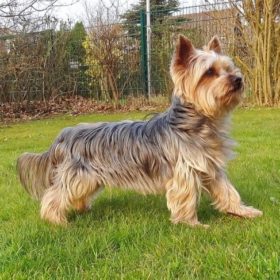 Yorkshire Terrier
Yorkshire Terrier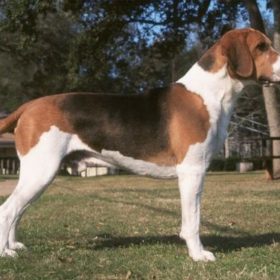 Harrier
Harrier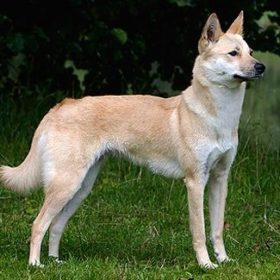 Korean Jindo
Korean Jindo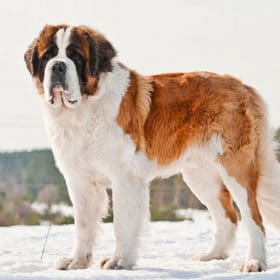 St. Bernard
St. Bernard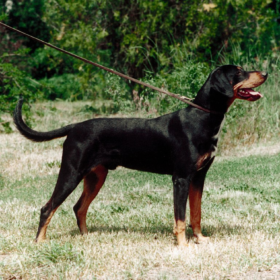 Transylvanian Hound
Transylvanian Hound